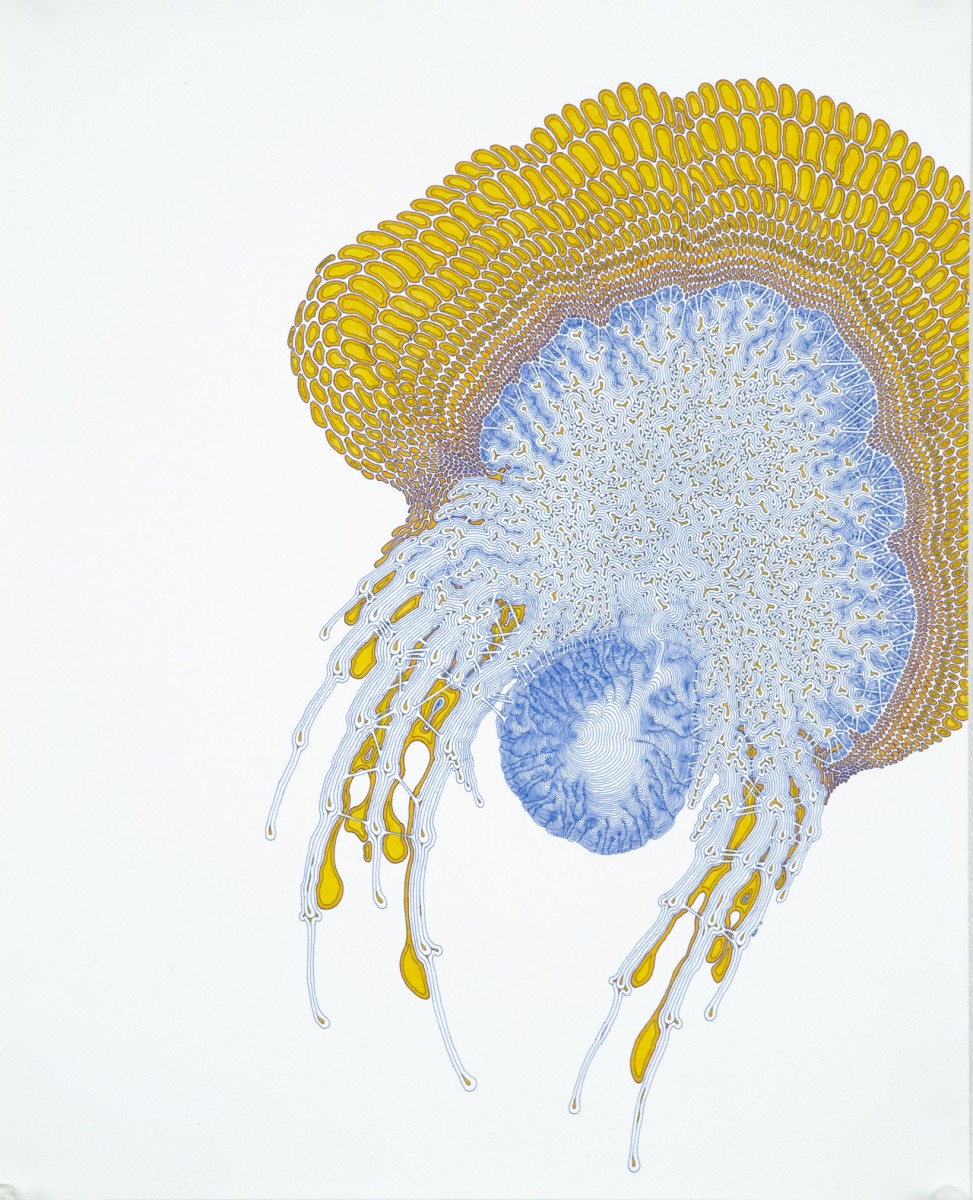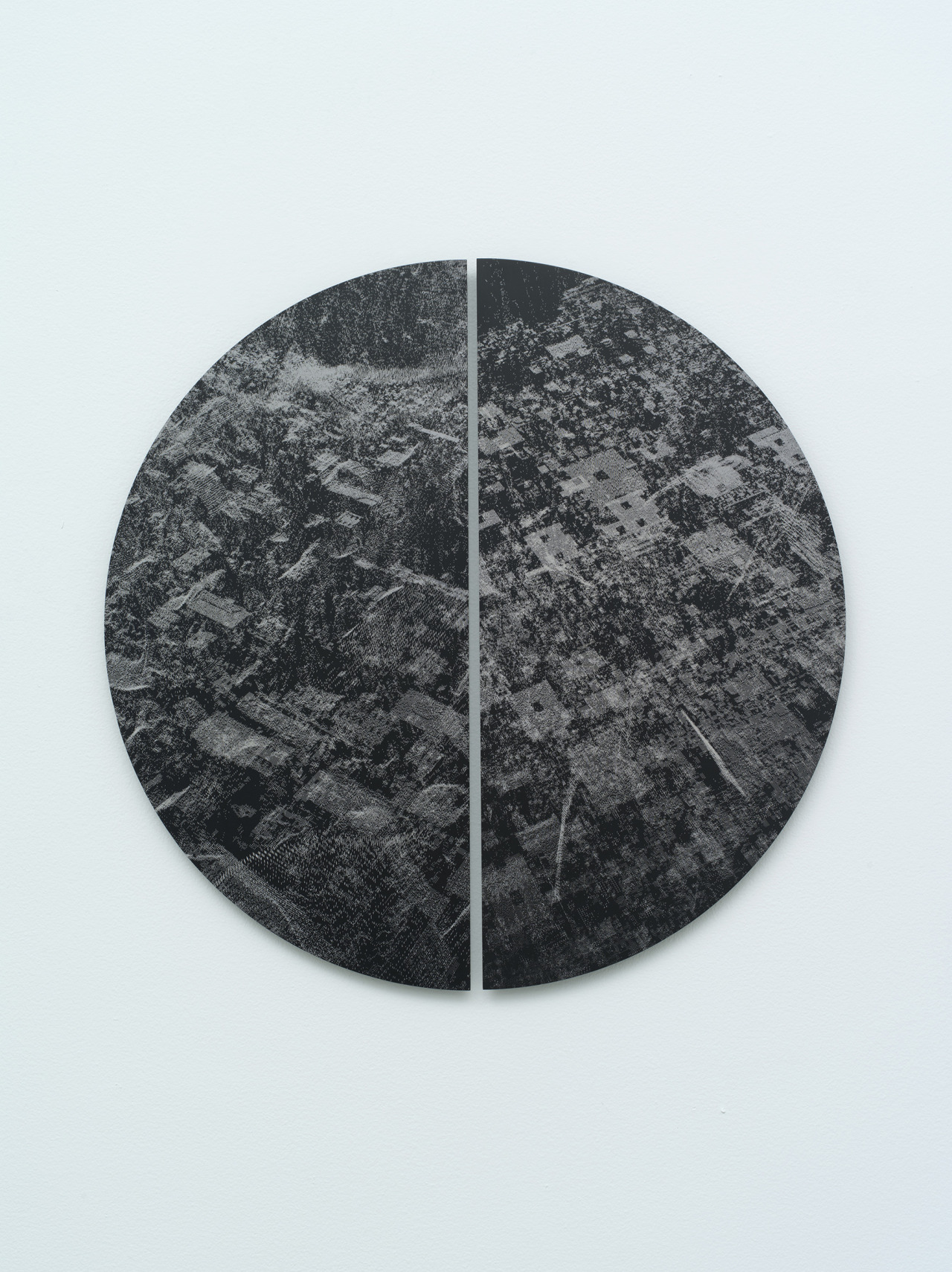Looking Outwards 3 : Generative Art
Daniel Zeller
 “Enforced Toxification” 2008, Ink and Acrylic on Paper
“Enforced Toxification” 2008, Ink and Acrylic on Paper
 “Internalized Wobularity” 2010, Ink, Watercolor and Acrylic on Paper,
“Internalized Wobularity” 2010, Ink, Watercolor and Acrylic on Paper,
Daniel Zeller only loosely fits within the category of Generative Art, but I feel that his work is an outstanding example of successful use of modular aesthetic style. Zeller only uses three or four shapes in his pieces, which he repeats with different parameters to create larger, emergent constructs. Despite his strict adherence to an aesthetic system, Zeller never plans any of his work beforehand, and simply improvises with flawless penmanship as he goes along. I respect both his methodical approach as well as his diligence in implementing an artistic process which leaves no margin for error.
Karl Sims
I focused specifically on Karl Sims’s 1994 project, “Evolving Virtual Creatures”. Sims randomly generated moving “creatures” within a simulated physics environment. Using an arbitrary fitness measure, such as ability to move through water, or walk on land, Sims’s genetic algorithms would select only the most successful generated creatures, and create a new generation of creatures using their genetic information. Not only was I born in 1994, but I also am intensely interested in genetic algorithms and self-improving programs, so this project has provided me with an aesthetically pleasing (albeit spastic) benchmark as to the state such of technologies at the beginning of my life.
Casey Reas
 “Substrate” 2013, Laser etched anodized aluminum
“Substrate” 2013, Laser etched anodized aluminum
Casey Reas’s 2013 project Substrate is a great example of re purposing utilitarian input for generative art. Reas etched television signals into anodized aluminum, creating surreal visual landscapes which assume three dimensional geometric qualities. I like the landscapes my mind constructs (reminiscent of Final Fantasy Tactics terrain) from data that was never meant to be spatially interpreted in the first place.